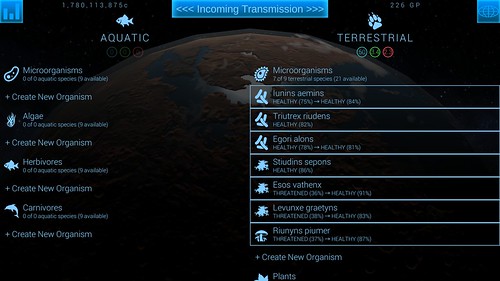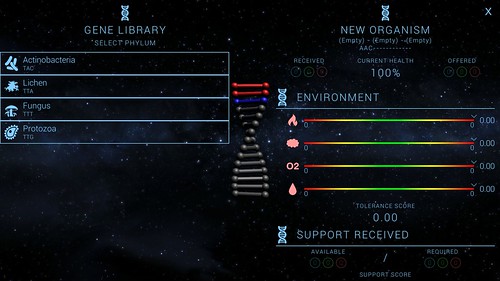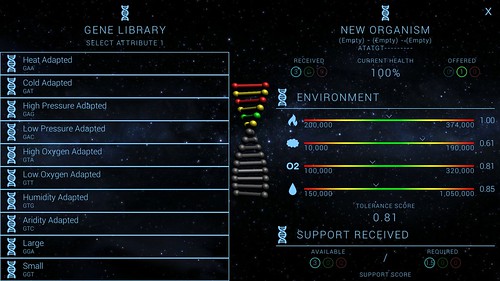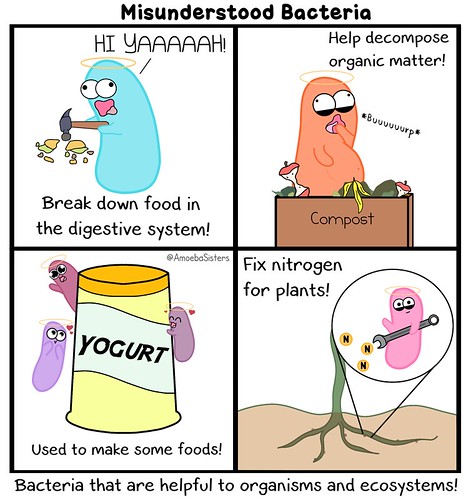TerraGenesis: Beginner guide to Biosphere PART 1 – Creating your first organism.
Posted by JackSep 26
If at the beginning of the game you chose the biosphere option instead of biomass this guide is for you. If not, go start a new game with it and we’ll be waiting for you.
If it’s your first time with the biosphere or you got burn buy it, this guide will help you get your head around the basic.
Note if you just want your planet to be habitable might not need to border with biosphere if the skyfarm is built.
Step 1:
First even if you have the biosphere you need to make your planet at least habitable for plants and microorganism. So get your temperature & atmosphere right, sprinkle some o2 and water and you’re good to go. Be sure your four metric are stable before starting playing around your biosphere. You could always try to create an organism that has better resistance to your planet problems, by giving it gene with higher tolerance to these problems or making them extremophile. However it’s easier to wait and create them in a stable environment.
Step 2:
Note: this step can actually start while you’re still in step 1.
While your adjusting your planet, research some biomass aquatic & terrestrial building (Like Reef institute & Zoological Society) and build some. If you only want to get to victory you can only build terrestrial building since it’s the one counted in the victory screen.
Step 3:
Once the planet metric are stables and you have enough biosphere infrastructure to support at least nine species you can start playing around biosphere menu.
How support work

What is support? In nature, each organism lives with support of other, carnivore need herbivore for food, the herbivore need plant to eat, plant need microorganism to enrich the soil with nutrient. This cycle of life is represented through support in the game. In the circle in blue on the left, its represent the amount of support your microorganism give. The green circle in the middle is the amount of support your plant give and the red circle on the right is the amount of support your animal give.
When you create an organism, this organism will receive (“consume” if you will) support from the previous group and offer support depending on the type of organism and the gene selected. Microorganism don’t require support so you can ignore the +50% support required modifier when creating them. Be sure to have enough support offered in one group before making organism from the next group. The base number of support each organisms give is 1 before modifier (seem to be 2 for microbe)
Note that to achieve victory you only need a bit less that 20 of terrestrial plant support (on mars, 10 for the moon), so if you’re in a hurry you can only focus on getting these 20 of plant support.
Creating your first organism

Once you selected what group your organism is going to be, you can now select the phylum gene of your organism. Let’s pick Lichen for this example since it’s our first organism and lichen offer better base environment that the others with its +10% bonus to all tolerances.

Now that we chosen our phylum we can now pick three gene that will determine the base attribute of our organism. This is probably the best part of the biosphere, creating your organism. Do you want it to survive at all cost or allow it to generate a lot of support for higher up the food chain. Or maybe you want it to proliferate like crazy and give out O2 at the same time. Or actually make your planet some extra credit. You can all do that, for now let’s build a simple organism that we want to survive on Mars with our current temperature, pressure, o2 level and water level.

Since they can ignore support required, the Large Gene is very interesting since its give an extra 50% supports and no drawback. You can even pick it three times if you want since attribute gene can stack, but let’s pick it once for this example. Another interesting gene unique for microorganism is the Nitrogen fixing gene. Its give 50% supports, but reduce resistance to low pressure by 30%. We could counterbalance that drawback by giving it the resistance to low pressure gene (+30% tolerance low pressure -30% tolerance high pressure). Since our pressure is high and stable and lichen already get a +10% to all tolerances, we will add another gene instead like one that increase the birthrate so our lichen can proliferate. The High metabolism gene is probably our best bet since it provides a boost of 100% birthrate and its drawback is that it need 50% support, but since our lichen doesn’t need support we can ignore it. Other viable options are either the Nocturnal gene (+100% birthrate -30% low temperature tolerance) or the Invasive gene (+100% birth rate -2000 credit/m). Infectious is another option, but it reduces your population grow and Airborne would be nice, but it has a -30 % tolerance to low pressure and since we already got -30% from Nitrogen fixing we don’t want them to stack together.
Now name your organism and you’re good to go. Now that you know have built your first organism you can start playing around and build a whole ecosystem.
Other tips that can help your biosphere creation and that your species survives.
- Invest money on each species to increase their health and help them survives.
- You can play around the biosphere menu and create your species while the game is paused.
- The culture modifier that usually help the biomass will help all your species birthrate instead.
Stay tuned for part 2: building a whole ecosystem and optimizing your biosphere to make your planet habitable.
3 comments
Comment by Corey on June 9, 2019 at 7:01 pm
Im on Triton…i cannot figure out how to start a micro organizim
Or anything else
Can u assist me
I have researched all i need to fo the moon
Comment by SARA on August 11, 2020 at 8:10 am
I’ve done a full biosphere, if you want help 🙂
Comment by David on June 2, 2021 at 5:23 am
Biosphere has become available and it says I can 1 organism. No matter what I choose it days 0 chance of survival. I’m not sure why pressure should effect an Aquatic microorganism but hey I even tried that. There’s clearly something I’m missing. Anyone point me in the right direction?